


Next: Direction Turning
Up: The Primary Visual Cortex
Previous: Orientation Selectivity
The cortical cells receiving input projections from the LGN have elongated RFs
(instead of the circular RFs like the retina and LGN cells) along various
directions with either on or off center and antagonistic surround. Some have
elongated on and off region side-by-side.
Hubel and Wiesel (1962) (students of Stephen Kuffler) first discovered two
different types of V1 cells which they termed simple and complex
cells, respectively. Buth types are selective (turned) to stimuli of different
spatial orientations.
- Simple Cells found mainly in V1 layers 4 and 6.
- have distinct excitatory and inhibitory regions within RF;
- linearity of spatial summation within both the excitatory and inhibitory regions
(a stimulus covering larger area inside excitatory region evokes larger response
than a stimulus covering a smaller area in the region);
- antagonism between the excitatory and inhibitory regions (stimuli covering both
regions are ineffective in evoking a response as the excitatory and inhibitory
responses are canceled out).
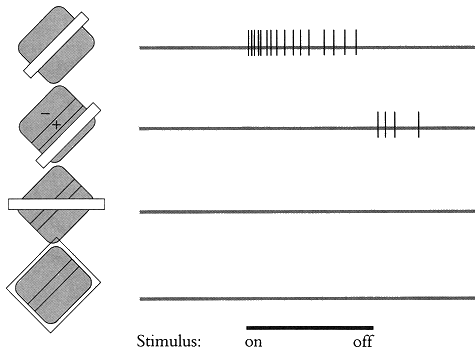
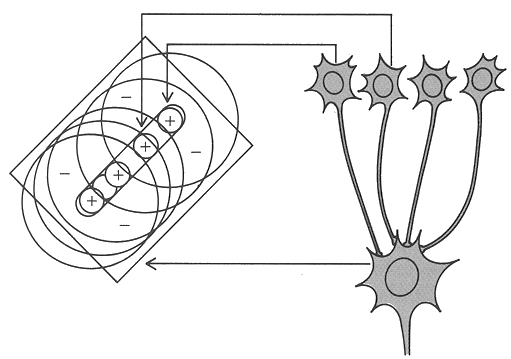
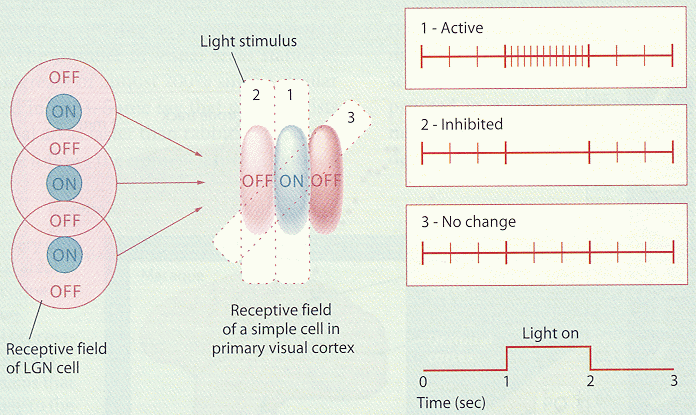
- Complex Cells found mainly in V1 layers 2, 3 and 5.
- have no clear division of excitatory and inhibitory regions inside their RFs;
- a bar with width about one third to one half of the width of the RF in the optimal
orientation of the cell will evoke maximal response, independent of where it is
placed inside the RF;
- a stimulus with uniform intensity covering the entire RF will evoke no response.
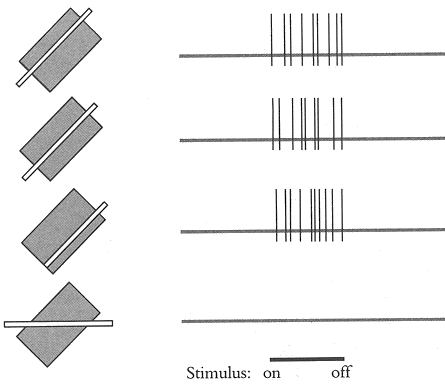
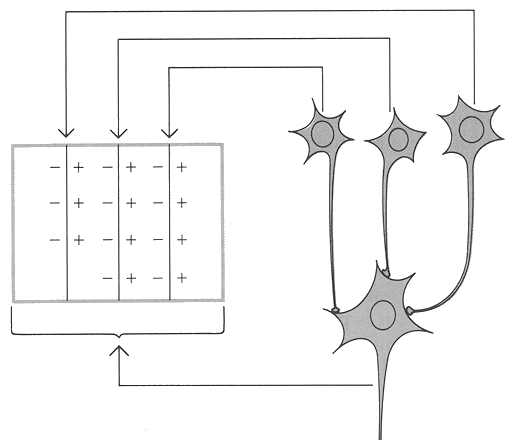
The third type of cells found in the blobs in layer 3 are monocular and sensitive to color,
and have color-opponent (L/M, LM/S) center-surround circular RFs. They are insensitive to
orientation.



Next: Direction Turning
Up: The Primary Visual Cortex
Previous: Orientation Selectivity
Ruye Wang
2013-04-08




